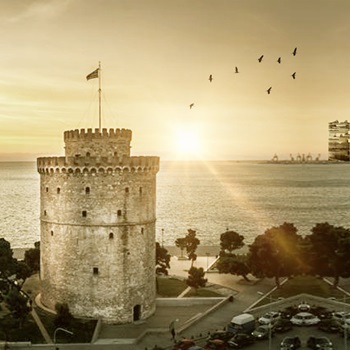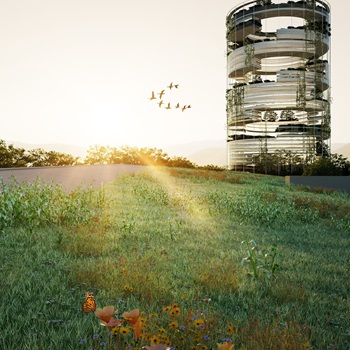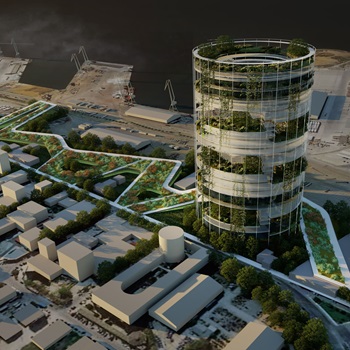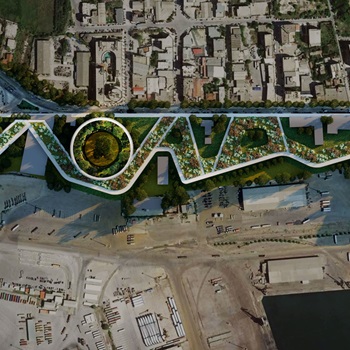
4th prize: Interview with We Are Architects and Urban Planners
1) Please tell us a few words about you and what motivated you to participate in the competition of Arxellence 2. Did you ever undertake/design a similar project (CBD) in the past?
a. Tell us a few words about the team that worked on the proposal.
We Are Architects and Urban Planners, a collective we affectionately call “WaAU”, brings together architects, urban planners, landscape architects, intellectuals and artists who are motivated by the desire to innovate, design and create in partnership. Our close collaborations go back to Buenos Aires in the 1990s and have since expanded across continents and across generations to manage a wide range of projects to successful completion.
The members of WaAU TEAM for the CBD project is composed by:
- Alberto MIZRAHI
- Leticia ALFARO
- Guillermo LESCH
- Valeria FRANCK
- Federico MENICHETI
- Osvaldo Alvarez ROJAS
- Philippa PAGE
- Maria Niovi ANGELIDI (Local Consultant)
- Facundo GARCIA BERRO (Assistant)
b. Did you ever undertake/design a similar project in the past?
This is a team with extensive experience in the conceptualization and implementation of large and complex architectural and urban planning projects. It draws on a wealth of experience in the field which is reinvigorated by the fresh ideas offered from its younger members. We pride ourselves on creating unique, sustainable designs that emerge organically within their urban and cultural contexts. The team has worked together in previous projects.
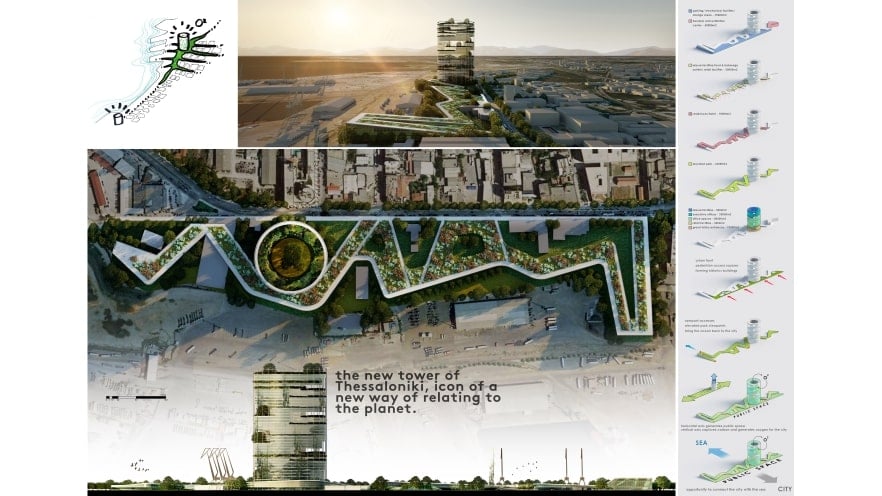
2) Could you give us a description of your proposal? How did you approach the project and what was the main idea of your design?
a. Describe in a few words the structure of the CBD you designed (the main characteristics of your synthesis).
Our proposal engages with Thessaloniki’s distinctive cultural heritage by establishing a dialogue across time and space between the splendid White Tower, an iconic symbol of the city, and its new icon: the “New Bioclimatic Tower of Thessaloniki”.
b. Describe the main idea of your proposal.
For Thessaloniki, our vision was very clear from the start: to create a unique and distinctive icon for the city in the form of a vertical ecosystem while opening up a continuum of public space for citizen use.
c. What difficulties did you face?
One of the main challenges was how to open up and liberate the skyline to ensure that the sea is enjoyed by as many citizens as possible, notwithstanding the operating port in between this site and the sea, and the integration of the existing buildings into the design.
The solution was to create a network of pedestrian pathways that offer a continuous vista of the sea. The pathways generate trajectories that foster new urban relations, as they bring the sea back to the city in a symbiotic encounter. As they do this, they frame and envelop the historic buildings with green areas.
d. What would you say is the most innovative feature of your proposal?
The New Bioclimatic Tower is designed as a lightweight structure with a double thermal and acoustic skin. The structure is encased in an authentically green shell composed of a green bioclimatic mattress, with water harvesting and vertical orchards. It is not a hermetic, compact structure but one that allows the elements inside to aliment the sustainable cycle.
The tower functions as a vertical ecosystem, in a similar way that a living organism would. It serves as a lung that lives and breathes. As its hanging gardens change colour with each season, it runs on its own sustainable cycle of self-renewal.
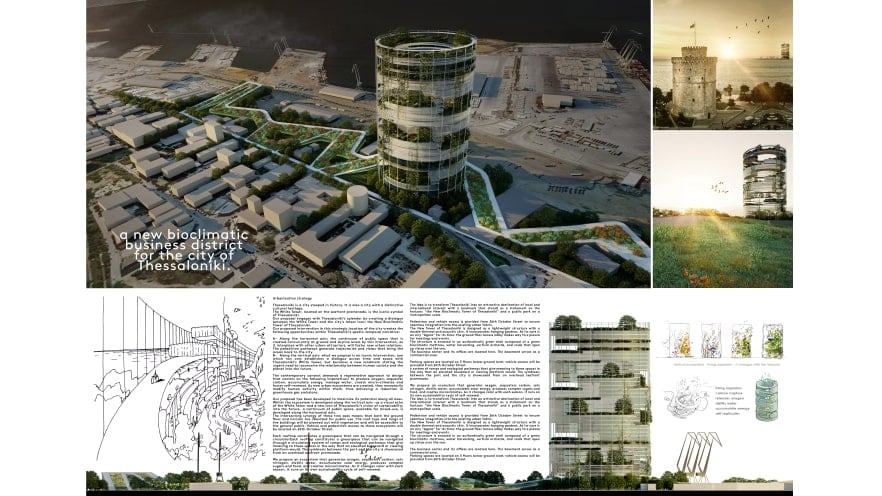
3) What do you think made your idea stand out and why? What are the experiences you gained from the competition of ArXellence 2?
The following key tenets of our bioclimatic envisioning of the new Thessaloniki mean that it stands out:
1) the creation of a new icon for the city of Thessaloniki that visually echoes the White Tower. The New Bioclimatic Tower winks at its historic counterpart across the bay. Its design celebrates local heritage as it also envisions a renewable and sustainable public urban landscape for the future, one that reconceives the relationship between urban, human society and the planet.
2) the sustainable, bioclimatic envisioning of the new Thessaloniki in the form of a tower that functions as a vertical ecosystem—functioning as a living organism would with a lung that breathes. As its hanging gardens change color with each season, it runs on its own sustainable cycle of self-renewal.
3) the holistic conceptualization of a design that takes advantage of both the horizontal and vertical axes of the site. This not only establishes a continuum of green, public space across the entire surface area of the location, but also avoids a cluttered skyline in favor of a liberated vista that brings the sea back to the city.
